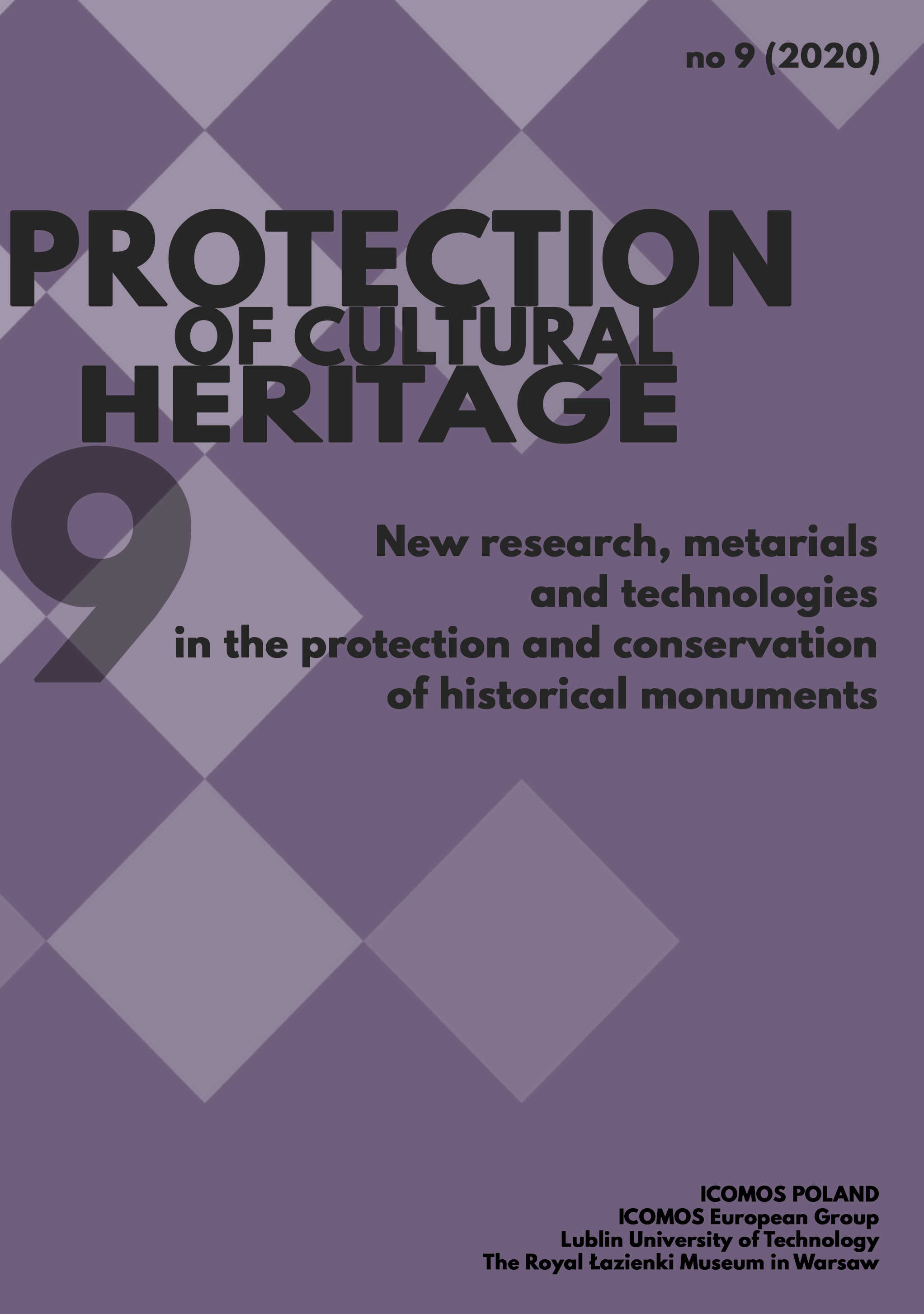Re-creating Indigenous Architectural Knowledge in Arctic Canada and Norway
Article Sidebar
Open full text
Open full text
Issue No. 9 (2020)
-
Indigenous Cultural Heritage: Developing New Approaches and Best Practices for World Heritage Based on Indigenous Perspectives and Values
Proceedings, Recommendations, and Outcomes of the ICOMOS International Scientific Committee Conference and Forum on Indigenous Cultural Heritage, 2019Diane Archibald1-13 -
Function resulting from the form – adapting the post-war modernist architecture for new functional programs
Błażej Ciarkowski15-28
-
Adaptation of the machine laboratory of the former School of Building Crafts and the Higher School of Machine Construction into the library of the Faculty of Architecture of Wroclaw University of Technology
Elżbieta Grodzka29-41
-
Transformation of the Sea Terminal in Gdynia into the Museum of Emigration
Robert Hirsch43-56
-
Re-creating Indigenous Architectural Knowledge in Arctic Canada and Norway
Nancy Mackin57-72
-
Historical construction wood – extended research methods on the example of old roof trusses
Dominik Mączyński73-81
-
Moisture insulation with clay of underground buildings on the example of modern era fortifications and Warsaw Elizeum
Lech Narębski83-96
-
Eye tracker as a pro-social tool of managing urbanistic and architectural heritage
Marta Alina Rusnak97-115
-
On the necessity and possibilities of providing access for disabled persons to historical public buildings
Barbara Rymsza, Krzysztof Kaperczak, Justyna Kiljan-Walerzak117-127
-
Evolution of the principles of historical monuments conservation – the example of UNESCO World Heritage cities
Boguslaw Szmygin129-140
-
Laser scanning of the wooden church of the Assumption of the Blessed Virgin Mary and St Michael The Archangel in Haczów, Poland
Wojciech Markowski, Anna Wierzejska141-159
Main Article Content
DOI
Authors
Abstract
Long resident peoples including Gwich’in, Inuvialuit, Copper Inuit, and Sami, Coast Salish and others have learned over countless generations of observation and experimentation to construct place-specific, biomimetic architecture. To learn more about the heritage value of long-resident peoples’ architecture, and to discover how their architecture can selectively inform adaptable architecture of the future. we engaged Inuit and First Nations knowledge-holders and young people in re-creating tradition-based shelters and housing. During the reconstructions, children and Elders alike expressed their enthusiasm and pride in the inventiveness and usefulness of their ancestral architectural wisdom. Several of the structures created during this research are still standing years later and continue to serve as emergency shelters for food harvesters. During extreme weather, the shelters contribute to a potentially widespread network of food harvester dwellings that would facilitate revitalization of traditional foodways. The re-creations indicate that building materials, forms, assembly technologies, and other considerations from the architecture of Indigenous peoples provide a valuable heritage resource for architects of the future.
Keywords:
References
Hadlari A. Personal communication, April 7-9 2016, Inuit knowledge-holder, Cambridge Bay NU Canada.
Mackin N., Moss Houses in the Circumpolar North: Architectural Traditions and Innovations That Respond to Climate Change. International Journal of Climate Change: Impacts and Responses Volume 8, Issue 2, pp.1-14, 2015.
Emmons R., An Investigation of Sami Building Structures. Sami Culture, University of Texas , Online https://www.laits.utexas.edu/sami/dieda/anthro/architecture.htm#Thermal, 2004.
Sjølie R., The Sami Goahti, an Earthen House in the Arctic. Vernacular Architecture and Earthen Architecture: contribution for sustainable architecture. The Sami Goahti, an Earthen House in the Arctic, Taylor and Francis Group: London, 71-76, 2014.
Auroville Earth Institute UNESCO Chair Earthen Architecture, Stability Notions, On-line http://www.earth-auroville.com/stability_notions_en.php
Fehr A. &Andre A., Gwich’in Ethnobotany, Gwich'in Social and Cultural Institute and Aurora Research Institute: Inuvik NWT Canada, 2002.
Gruben P. Personal communication, Inuvialuit knowledge-holder, Dec. 18 2014, Aklavik NWT Canada.
English M. Personal communication, Inuivialuit knowledge-holder, Dec. 2015, Inuvik NWT Canada.
Jerome J. Personal communication, Inuivialuit knowledge-holder, Dec. 2015, Inuvik NWT Canada.
Lee M. & Reinhardt G. T., Eskimo Architecture: Dwelling and Structure in the Early Historic Period, University of Alaska Press: Fairbanks AK, 2002.
Kershaw G. P. , Scott P. A., Welch H. E., The Shelter Characteristics of Traditional-Styled Inuit Snow Houses, Arctic Vol. 49, No. 4 (December 1996) P. 328 – 338, 1996.
Handy R. L., The Perfect Dome, American Scientist May-June 2011, Online http://www.americanscientist.org/issues/pub/2011/3/the-perfect-dome
Monreal A., Catenary or Parabola, who will tell? DIMACS entre for Discrete mathematics and theoretical computer science, online http://www.cs.rutgers.edu/~mcgrew/dimacs/slides/Amadeo_Huylebrouck.pdf
Inuvialuit Elders with Robert Bandringa, Inuvialuit Nautchiangit: Relationships between people and plants, Inuvik: Inuvialuit Cultural Resource Centre, 2010.
Senosiain J., Bio-architecture, Architectural Press: Oxford, 2003.
Gunvar Gutorm, Árbediehtu (Sami Traditional Knowledge) as a concept and in practice, Diedut 1 2011, Sámi allaskuvla / Sami University College 2011, 59–76. On-line at https://brage.bibsys.no/xmlui//bitstream/id/165652/Diedut-1-2011_GunvorGuttorm.pdf
Article Details
Abstract views: 515
License

This work is licensed under a Creative Commons Attribution-ShareAlike 4.0 International License.






